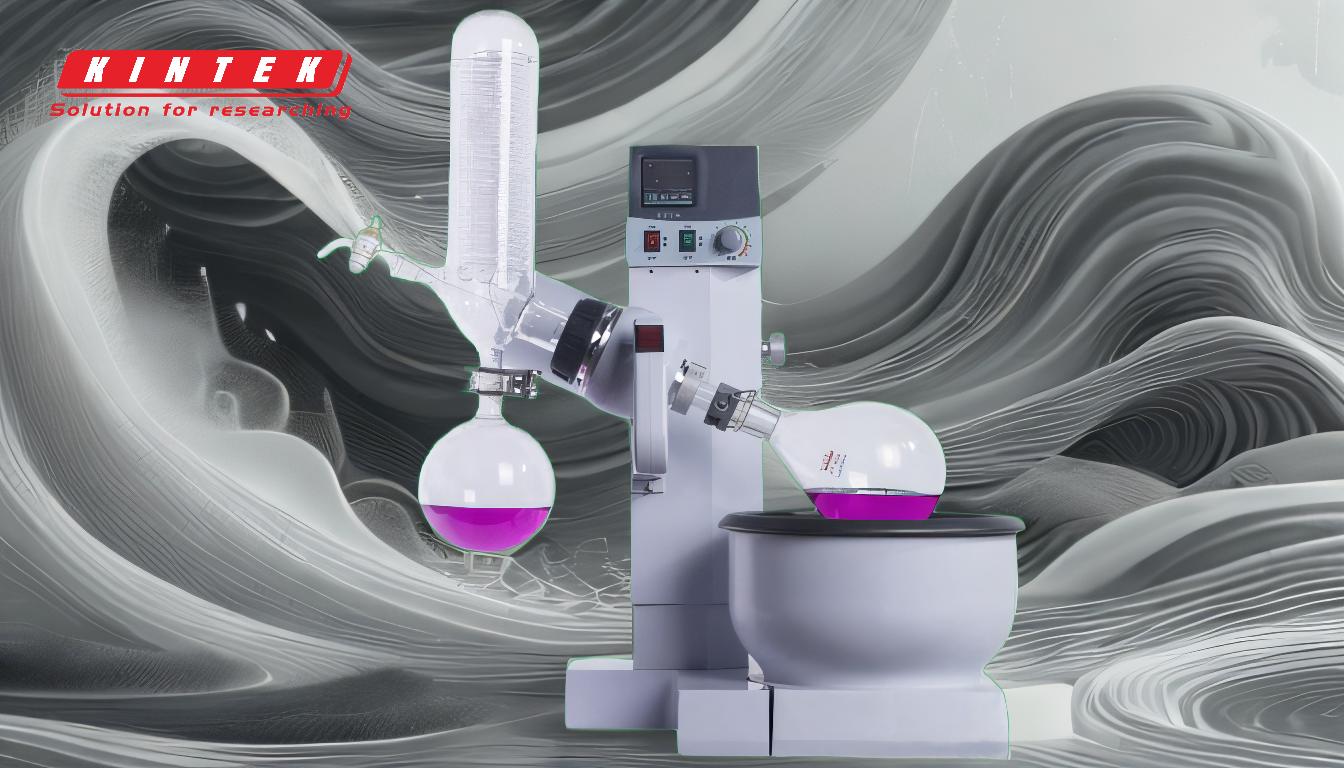Rotary evaporation is a widely used technique in laboratories for solvent removal, and the time it takes depends on several factors. These include the type of solvent, the size of the rotovap, the bath temperature, the vacuum level, the rotation speed, and the efficiency of the condenser. Generally, the process can take anywhere from a few minutes to several hours, depending on how these variables are optimized. For instance, solvents with lower boiling points will evaporate faster, while higher bath temperatures and stronger vacuum levels can significantly speed up the process. However, care must be taken to avoid damaging heat-sensitive samples or overloading the system. Balancing these factors is key to achieving efficient and safe evaporation.
Key Points Explained:

-
Factors Influencing Evaporation Time:
- Solvent Type: The boiling point of the solvent is a primary determinant of evaporation time. Solvents with lower boiling points (e.g., acetone, ethanol) evaporate faster than those with higher boiling points (e.g., water, DMSO).
- Bath Temperature: Higher bath temperatures increase the rate of evaporation by providing more energy to the solvent. However, excessive heat can damage heat-sensitive samples or cause bumping.
- Vacuum Level: A stronger vacuum lowers the boiling point of the solvent, enabling faster evaporation. The vacuum level must be balanced with the system's pressure resistance to avoid equipment damage.
- Rotation Speed: Faster rotation increases the surface area of the solvent, promoting quicker evaporation. However, excessively high speeds can cause mechanical damage or reduce efficiency.
- Condenser Efficiency: An efficient condenser ensures rapid recovery of the evaporated solvent, preventing recondensation and maintaining a high evaporation rate.
- Vessel Size: Larger vessels can hold more solvent but may require more time to evaporate due to the increased volume. Smaller vessels are faster but may limit sample size.
-
Optimizing Evaporation Time:
- Balancing Speed and Safety: While higher bath temperatures and stronger vacuum levels can speed up evaporation, they must be carefully controlled to avoid damaging the sample or the equipment.
- Rotation Speed Adjustment: The rotation speed should be set to maximize surface area without causing mechanical stress or excessive splashing.
- Condenser Maintenance: Ensuring the condenser is clean and functioning properly is essential for maintaining high evaporation rates.
-
Practical Considerations:
- Sample Sensitivity: Heat-sensitive samples require lower bath temperatures and slower evaporation rates to prevent degradation.
- Equipment Limitations: The size and capacity of the rotary evaporator, as well as the quality of the vacuum pump and condenser, can limit the maximum achievable evaporation rate.
- System Tightness: A well-sealed system with high-quality sealing rings and vacuum tubes (e.g., PTFE) ensures efficient vacuum maintenance and faster evaporation.
-
Typical Evaporation Times:
- Fast-Evaporating Solvents: Solvents like acetone or ethyl acetate can evaporate in as little as 5–15 minutes under optimal conditions.
- Moderate-Evaporating Solvents: Solvents like ethanol or methanol may take 20–40 minutes.
- Slow-Evaporating Solvents: Water or DMSO can take 1–2 hours or more, depending on the conditions.
-
Troubleshooting Slow Evaporation:
- Check Vacuum Level: Ensure the vacuum pump is functioning correctly and the system is tightly sealed.
- Adjust Bath Temperature: Increase the bath temperature within safe limits to speed up evaporation.
- Optimize Rotation Speed: Adjust the rotation speed to maximize surface area without causing splashing or mechanical stress.
- Inspect Condenser: Clean or replace the condenser if it is not efficiently recovering the solvent.
In summary, the time required for rotary evaporation depends on a combination of factors, including the solvent properties, equipment settings, and sample characteristics. By carefully optimizing these variables, users can achieve efficient and safe solvent removal tailored to their specific needs.
Summary Table:
| Factor | Impact on Evaporation Time |
|---|---|
| Solvent Type | Lower boiling points (e.g., acetone) evaporate faster; higher boiling points (e.g., water) take longer. |
| Bath Temperature | Higher temperatures speed up evaporation but risk damaging heat-sensitive samples. |
| Vacuum Level | Stronger vacuum lowers boiling points, enabling faster evaporation. |
| Rotation Speed | Faster rotation increases surface area, promoting quicker evaporation. |
| Condenser Efficiency | Efficient condensers prevent recondensation, maintaining high evaporation rates. |
| Vessel Size | Larger vessels hold more solvent but may require more time to evaporate. |
Need help optimizing your rotary evaporation process? Contact our experts today for tailored solutions!










